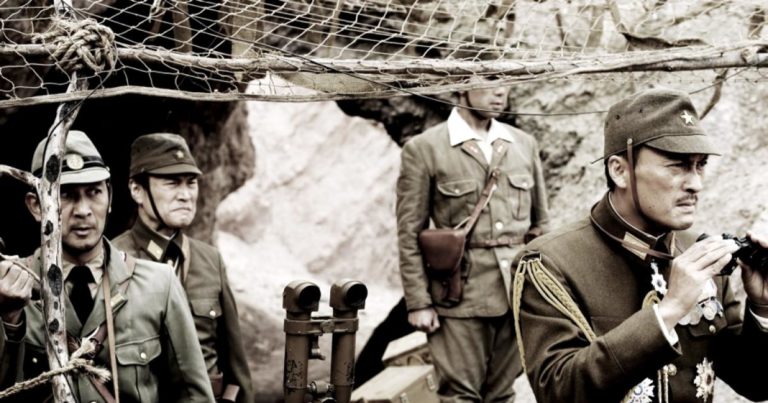

on January 12, 2007, and was released in most states on January 19. It was subsequently released in more areas of the U.S. The film was released in Japan on Decemand received a limited release in the United States on Decemin order to be eligible for consideration for the 79th Academy Awards, for which it received four nominations, including Best Picture and winning Best Sound Editing. After Flags of Our Fathers flopped at the box office, Paramount Pictures sold the U.S. Letters from Iwo Jima is almost entirely in Japanese, despite being produced by American companies DreamWorks Pictures, Malpaso Productions and Amblin Entertainment. The film portrays the Battle of Iwo Jima from the perspective of the Japanese soldiers and is a companion piece to Eastwood's Flags of Our Fathers, which depicts the same battle from the American viewpoint the two films were shot back to back. Letters from Iwo Jima ( 硫黄島からの手紙, Iōjima Kara no Tegami) is a 2006 Japanese-language American war film directed and co-produced by Clint Eastwood, starring Ken Watanabe and Kazunari Ninomiya. It is only fitting that his greatest achievement as a director is in a language he himself does not speak, finding in our enemies’ story a universal tragedy that transcends nationality.Clint Eastwood, Ken Watanabe, Kazunari Ninomiya and Tsuyoshi Ihara after a screening at the Berlinale 2007
Eastwood got his start playing an American antihero for an Italian director who didn’t understand a word he said, but still found a way to show us a vision of our own West that was more honest in its moral ambiguity than most of our own Westerns. On the other hand, nothing is more ironic than the sight of men fighting honorably for a dishonorable cause, which is the engine that gives this movie its tremendous power. It tried several tricks to generate irony, but it never could overcome that fundamentally unironic set up. Another problem facing Flags of Our Father was that it was about honorable guys fighting in a righteous cause and winning. The deaths of almost all the Japanese liberated this to become a real story, not just a hagiography. 
One of the many problems with Flag of Our Fathers was that it was hampered by the participation of the men involved and their families, denying the moviemakers the necessary ability to manipulate personalities and events so as to better serve the story. In scene after scene, Eastwood masterfully jerks our sympathies back and forth, and it’s thrilling. Done poorly, this sort of juxtaposition causes the audience to check out and say “What do I care who wins?” But done well, it sends us on an emotional rollercoaster. We see one of their commanders callously tell his men to shoot at the American medics first, then in the next moment we see faceless American bombers kill the camp’s beloved horse. (See: Saving Private Ryan ) Eastwood lets the audience decide. In the bad version, the moviemakers arrange the events so as to make it clear to which guy is right and which guy is wrong. This is a classic split-protagonist movie: We have one bold, honorable hero who acts the way we wish we would act, and then we have a scared, easygoing hero who acts the way we’re sure we actually would. I believe that I have organized everything at home, but I am sorry I wasn’t able to attend to the kitchen floor before I left. The script does this beautifully in the first line of Watanabe’s narration as he writes a letter back home: “I am determined to serve and give my life for my country (this guy’s not like us, folks). When writing a historical piece, you have two jobs that you have to do right away: you have to make the familiar strange (to re-orient your audience to the rules of this new setting), then you have to make the strange familiar (to let them know that they can still identify with these people).






 0 kommentar(er)
0 kommentar(er)
